Showing 2901–3000 of 4374 results
-

5253-5-Meggido Church inscription
For layout purposes only:5253. Mozaic floor of possibly the oldest Christian Church in the Holy Land dating from c. 3rd. C. The church is located near Megiddo, the biblical site of Armageddon. The Greek mozaic inscriptions consecrates the place to Jesus Christ.
Add to Selected -
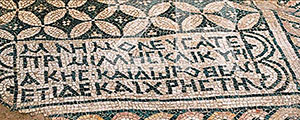
5253-6-Meggido Church inscription
For layout purposes only:5253. Mozaic floor of possibly the oldest Christian Church in the Holy Land dating from c. 3rd. C. The church is located near
Add to Selected -
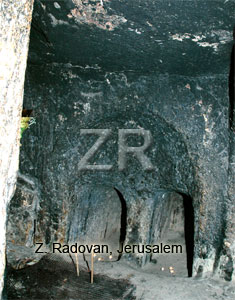
5257-1 Tomb of Joseph of Ar
For layout purposes only:5257. The tomb of Joseph of Arimathea located in the Strian Chapel at the Church of the Holy Sepulcher. According to all four Gospels, Joseph of Arimathea was a secret disciple of Jesus, whose body he buried in his own tomb. Virtuous and rich, he held a high office, and gained Pontius Pilate’s permission to […]
Add to Selected -
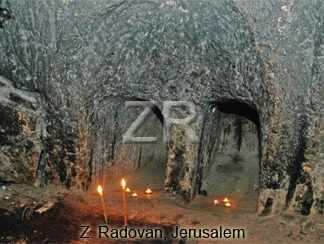
5257-3 Tomb of Joseph of A
For layout purposes only:5257. The tomb of Joseph of Arimathea located in the Strian Chapel at the Church of the Holy Sepulcher. According to all four Gospels, Joseph of Arimathea was a secret disciple of Jesus, whose body he buried in his own tomb. Virtuous and rich, he held a high office, and gained Pontius Pilate’s permission to […]
Add to Selected -
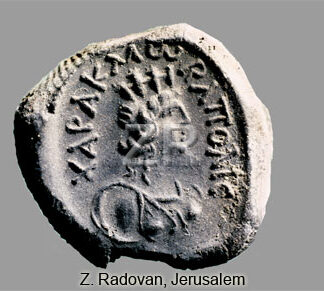
5261 The Goddes of Provinci
For layout purposes only:5261. Seal impression from Memphis depicting the goddes of Provincia Arabia
Add to Selected -
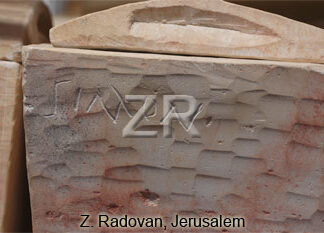
5264 Simon ossuary
For layout purposes only:5264. OSSUARY WITH A GREEK INSCRIPTION READING: ‘SINON’, FOUND IN A ROCK CARVED FAMILY TOMB DATING FROM THE C. 1ST. C. AD
Add to Selected -
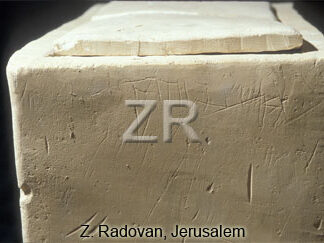
5266 Joshua ossuary
For layout purposes only:4453. OSSUARY FOUND IN A ROCK CARVED FAMILY TOMB NEAR JERUSALEM DATING FROM THE 1ST. C. AD.THE HEBREW INSCRIPTION MENTIONS THE NAME ‘JOSHUA’
Add to Selected -
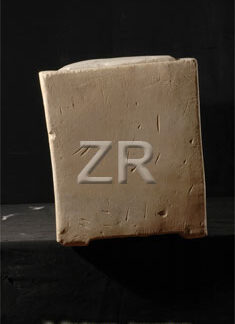
5266-1 Joshua ossuary
For layout purposes only:5266. OSSUARY FOUND IN A ROCK CARVED FAMILY TOMB NEAR JERUSALEM DATING FROM THE 1ST. C. AD.THE HEBREW INSCRIPTION MENTIONS THE NAME ‘JOSHUA’
Add to Selected -
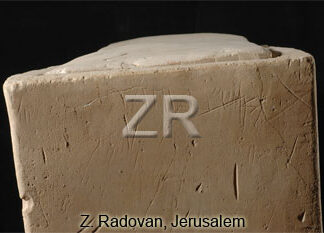
5266-2 Joshua ossuary
For layout purposes only:5266. OSSUARY FOUND IN A ROCK CARVED FAMILY TOMB NEAR JERUSALEM DATING FROM THE 1ST. C. AD.THE HEBREW INSCRIPTION MENTIONS THE NAME ‘JOSHUA’
Add to Selected -
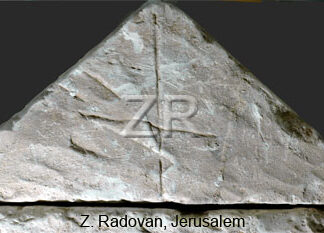
5269-3 Ossuary with a-cross
For layout purposes only:5269. Stone ossuary from a tomb near Jerusalem with a cross engraving, late Roman period
Add to Selected -
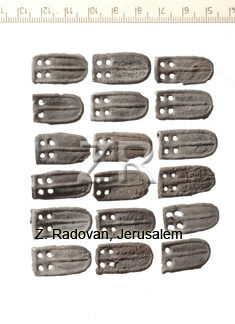
5273 Roman armored west
For layout purposes only:5273. Scales from an armored west worn by an Roman soldier, found near Masada.
Add to Selected -
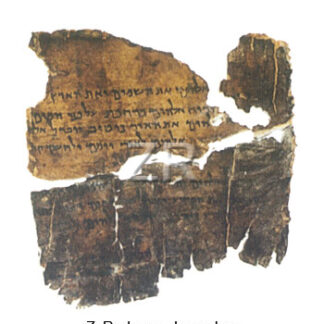
5274 Genesis Scroll from Qu
For layout purposes only:5274. Fragment from the GENESIS Scroll found in Qumran dating from C. 1st. C. AD
Add to Selected -
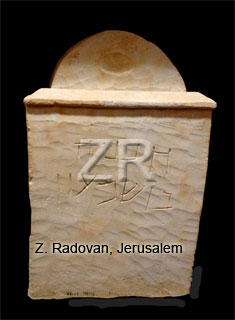
5277-2 Ossuary Hananiya Ben
For layout purposes only:5277. Ossuary inscribed in Hebrew: ‘Hananiyah Ben Simon”
Add to Selected -
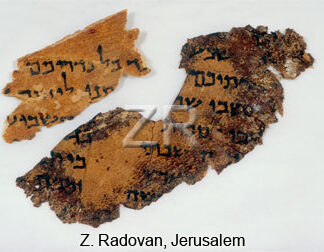
5278 Dear Sea Scroll,-Levit
For layout purposes only:5278. Dead Sea Scroll, feagment of a parchment found in the Judean desert The text is from Leviticus, verses from chapters 23 and 24.
Add to Selected -
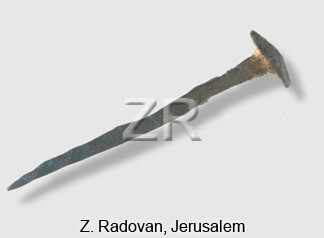
5279 Roman nail
For layout purposes only:5279. Large Roman period iron made nail found in Judea excavations. This type of nails was used for crucifixions.
Add to Selected -
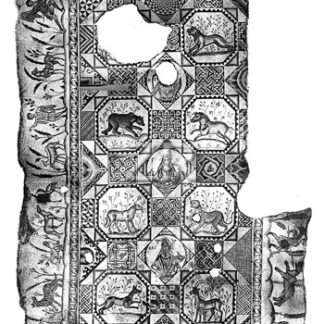
5288.-Beth Govrin Byzantine
For layout purposes only:5288. Mozaic floor of a Byzantine church in Beth Govrin, central Israel. The mozaic depicts hunting scenes and local wildlife.
Add to Selected -
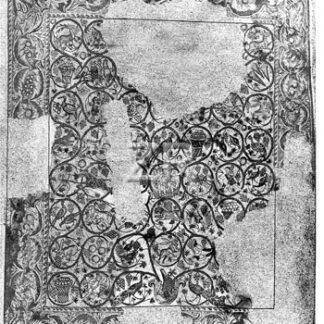
5289.-Beth Shean mozaic
For layout purposes only:5289. Beth Shean mozaic floor depicting agricultural activities. C. 5th. C. AD
Add to Selected -
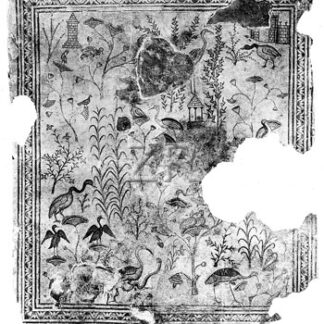
5290 Tabgha mosaic
For layout purposes only:5290. THE MOZAIC FLOOR FROM THE CHURCH OF THE LOAVES AND FISHES” IN TABGHA, NEAR THE SEA OF GALILEE, DEPICTING THE FLORA AND FAUNA OF THE LAKE
Add to Selected -
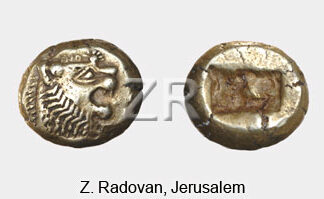
5292.-Lydian gold coin
For layout purposes only:5292. Lydian electrum third stater/trite gold coin (both sides). This coin in all likelihood was minted by King Alyattes in Sardis, Lydia, Asia Minor (present-day Turkey), c. 600-575 BC.
Add to Selected -
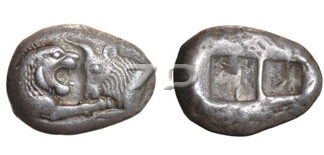
5293.-Lydian silver coin
For layout purposes only:5293. Lydian (Asia Minor) silver coin dating c. 561-546 BC. (both sides)
Add to Selected -

5295–Babylonian deities
For layout purposes only:5295. Babylonian boundary stone. A seated person, perhaps a priest, is worshiping the four main Babylonian deities: Ishtar, the goddess of love and fertility, symbolized by the star, the moon god Sin, the sun god Shamash and the goddess Ishara symbolized by the scorpion
Add to Selected -
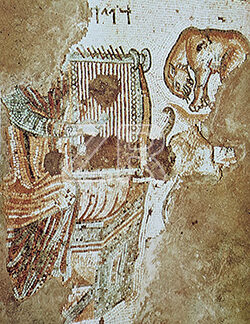
5298-3-David mosaic, Gaza
For layout purposes only:5298.. MOSAIC FLOOR FROM THE 4TH. C. A.D. SYNAGOGUE IN GAZA, DEPICTING KING DAVID PLAYING THE LYRE. Original mozaic which has been destroyed
Add to Selected -
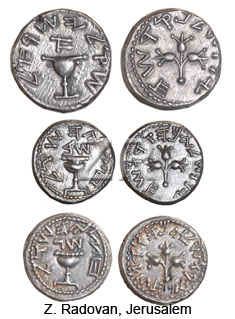
5299 Shekel coins
For layout purposes only:“5299. “”JEWISH WAR”” SHEKELS, C. 66 – 70 AD. TOP: 1 SILVER SHEKEL COIN INSCRIBED: “” FIRST. YEAR OF THE REVOLT””. MIDLE: 1/2 SILVER SHEKEL COIN INSCRIBED:”” 2ND. YEAR OF THE REVOLT””, BOTTOM: SILVER SHEKEL COIN INSCRIBED “”3RD. YEAR OF THE REVOLT”””
Add to Selected -
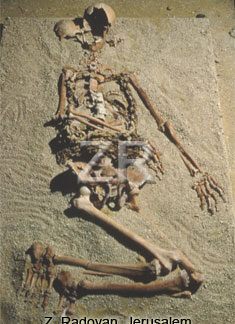
5301. Skeleton of a monk
For layout purposes only:5301. Remains of a Christian monk found lying in a small cell between Jerusalem and Bethlehem. Around the shoulders and waist of the monk was an iron chain, used for expiation of sin and penance. Perhaps late byzantine period.
Add to Selected -
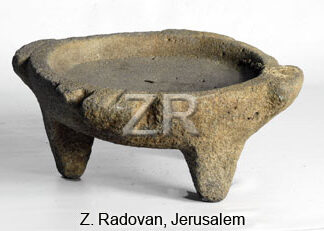
5302. Basalt pestle
For layout purposes only:5302. Three legged pestle of basalt used in cultic ceremonies.
Add to Selected -
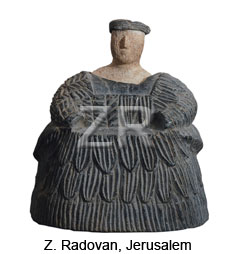
5313 Female figurine,-1800
For layout purposes only:5313. Female figurine dating from c. 1800 BC, Eastern Iran
Add to Selected -
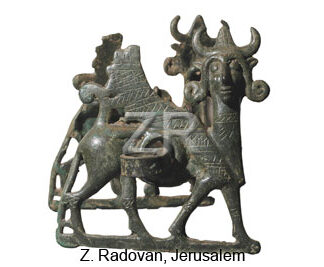
5313 Horse bit,-Iran
For layout purposes only:5313. Cheekpiece of horse-bit decorated with a sphinx. Dating c. 800-700 BC, Luristan, Western Iran
Add to Selected -
5314-1 Storage jar,-Ashkel
For layout purposes only:5314. Storage jar decorated with a serpent, early Iron age c. 1000 BC. Ashkalon excavations.
Add to Selected -

5315-1 Serpent,-Iron age As
For layout purposes only:5315. Snake engraved on a large storage jar dating c. 1000 BC. Ashkalon excavations.
Add to Selected -

5315-2 Serpent,-Iron age As
For layout purposes only:5315. Snake engraved on a large storage jar dating c. 1000 BC. Ashkalon excavations.
Add to Selected -

5316-1 Goblet,-Iran,-1200 B
For layout purposes only:5316. Golden goblet decorated with mythological creatures dating c. 1200 BC. Northern Iran
Add to Selected -
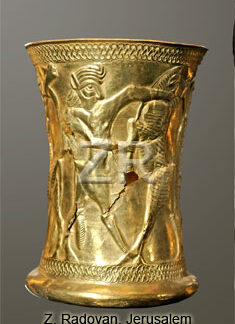
5316-2 Goblet,-Iran,-1200 B
For layout purposes only:5316. Golden goblet decorated with mythological creatures dating c. 1200 BC. Northern Iran
Add to Selected -
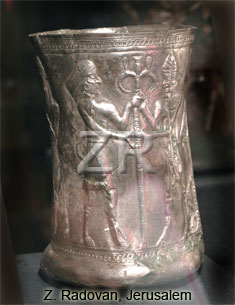
5316-4 Goblet,-Iran,-1200 B
For layout purposes only:5316. Silver goblet decorated with mythological creatures dating c. 1200 BC. Northern Iran
Add to Selected -
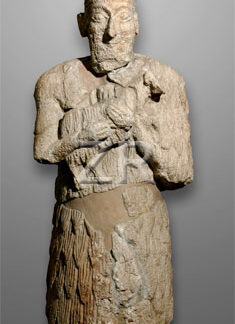
5317 Sumerian statue
For layout purposes only:5317. Summerian statue of a person bringing a sheep to be sacrificed. Sumeria, c. 2nd millenium BC
Add to Selected -
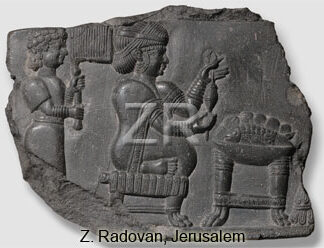
5318 Elamite woman spinning
For layout purposes only:“5318. Elamite lady seated on a lion-footed stool spinning wool witha spindle. Behind her stands a servant with a fan. On a lion-footed table in front of her is a large fish. The bitumen tablet dating from c. 700-600 BC was found in Susa, southwestern Iran”
Add to Selected -
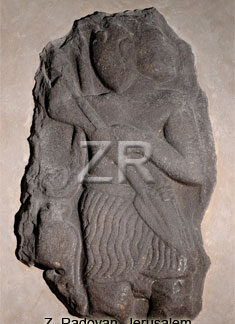
5319 Moabite storm God
For layout purposes only:5319. Large basalt statue of a warrior, perhaps the Moabite Storm-God. c. 1100 BC, found East of the Dead Sea.
Add to Selected -
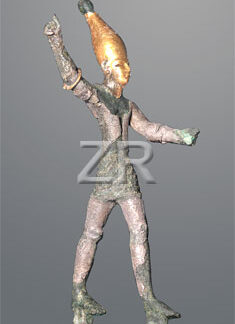
5320-1 Storm God Baal
For layout purposes only:5320. Figurine of the Storm God Baal. The figurine is covered in gold and silver. The right arm is risen upwards as if brandishing a weapon (lost), the left hand extends forward perhaps holding a shield. Dating c.1300 BC, found in Ugarit, Syria
Add to Selected -
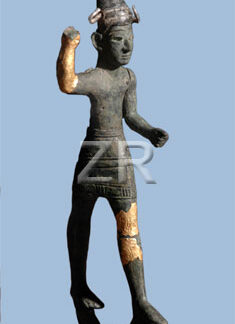
5320-2 Storm God Baal
For layout purposes only:5320. Figurine of the Storm God Baal. The figurine is covered in gold and silver. The right arm is risen upwards as if brandishing a weapon (lost), the left hand extends forward perhaps holding a shield. Dating c.1300 BC, found in Ugarit, Syria
Add to Selected -
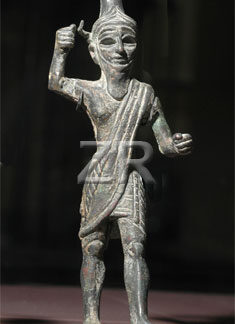
5320-5 Storm God Baal
For layout purposes only:5320. Figurine of the Storm God Baal. The figurine is covered in gold and silver. The right arm is risen upwards as if brandishing a weapon (lost), the left hand extends forward perhaps holding a shield. Dating c.1300 BC, found in Ugarit, Syria
Add to Selected -
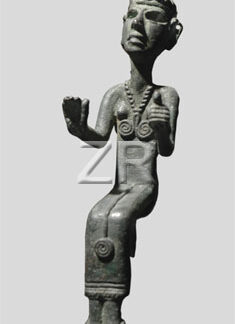
5321-1 Seated Deity
For layout purposes only:5321. Bronze figurine of a seated female deity, perhaps Cnaanite. Syria, c. 1000-800 BC
Add to Selected -
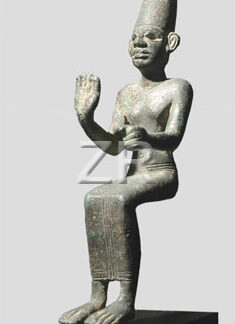
5321-2 Seated Deity
For layout purposes only:5321. Bronze figurine of a seated female deity, perhaps Cnaanite. Syria, c. 1000-800 BC
Add to Selected -
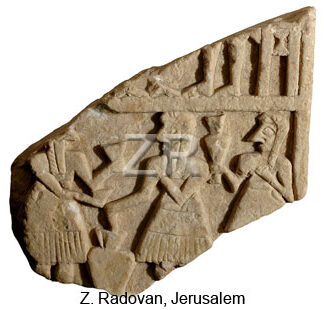
5323 Festival scene from Su
For layout purposes only:5323. Stone plate depicting a festival scene. Susa, c. 2500 BC
Add to Selected -
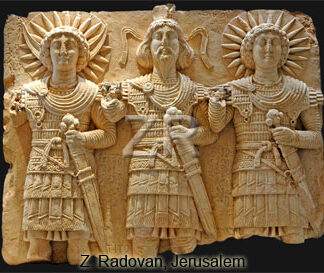
5324 Triad of Palmyerne God
For layout purposes only:5324.Triad of Palmyerne Gods, c. 150 AD, Palmyra, Syria
Add to Selected -
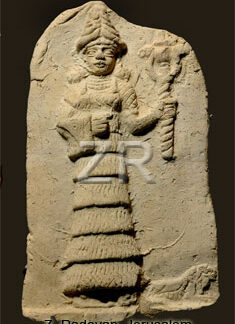
5326 Goddess Ishtar
For layout purposes only:5326. Mesopotamian goddess Ishtar
Add to Selected -
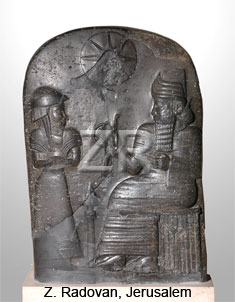
5327 Worshiper and God
For layout purposes only:“5327. A worshiper standing in front of a Mesopotamian deity.Susa (Iran) c. 1800-1500 BC”
Add to Selected -
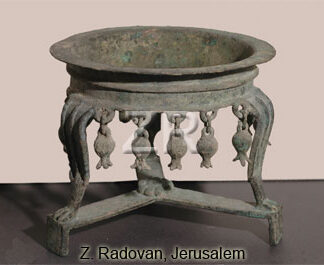
5328 Tripod from Ras Shamra
For layout purposes only:5328. Decorated bronze tripod used for supporting large jars, possibly in cultic ceremonies. Ras Shamra, c. 15th C. BC
Add to Selected -
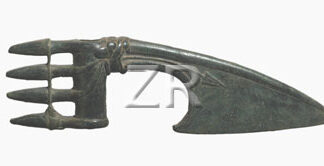
5329 Ceremonial ax head
For layout purposes only:5329. Ceremonial, decorated, ax-head, bronze, Mesopotamia, c. 13th. C. BC
Add to Selected -
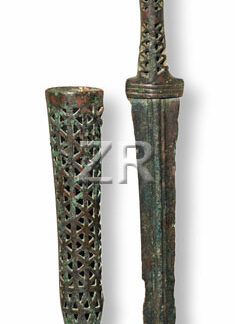
5330 Dagger and sheath
For layout purposes only:5330. Dagger and sheath, Mesopotamia, Iron age I. 19-14th. C. BC
Add to Selected -
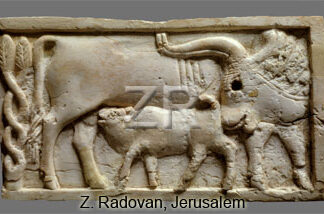
5331-1 Phoenician ivory
For layout purposes only:“5331. Ivory plate depicting a cow suckling her young calf. Phoenician carving from Arslan Tash, ( Syria) 8th B.C.””Woe to those who lie upon beds of ivory, and stretch themselves upon their couches, and eat lambs from the flock, and calves from the midst of the stall….”” Amos 6:4″
Add to Selected -
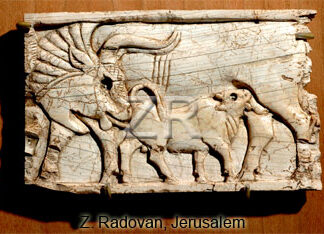
5331-2 Phoenician ivory
For layout purposes only:“5331. Ivory plate depicting a cow suckling her young calf. Phoenician carving from Arslan Tash, ( Syria) 8th B.C.””Woe to those who lie upon beds of ivory, and stretch themselves upon their couches, and eat lambs from the flock, and calves from the midst of the stall….”” Amos 6:4″
Add to Selected -
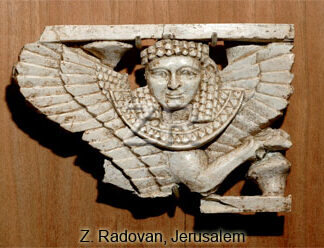
5332 Ivory Sfinx
For layout purposes only:5332. Ivory plate depicting a sphinx, a winged creature with the body of a lion and a human head. Phoenician carving from Arslan Tash, ( Syria) 8th B.C.
Add to Selected -
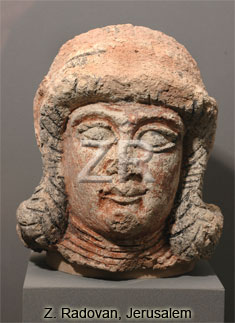
5333 Female head,-Mesopotam
For layout purposes only:5333. Female head, Mesopotamia, c. 8-7th. C. BC
Add to Selected -
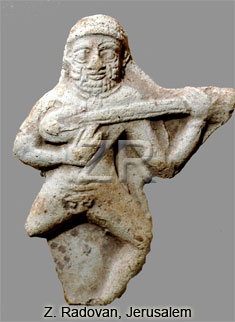
5334-1 Harp player,-Sumer
For layout purposes only:5334. Harp player, clay figurine from Eshnnuna, Mesopotamia, c. 9-7th. C. BC
Add to Selected -
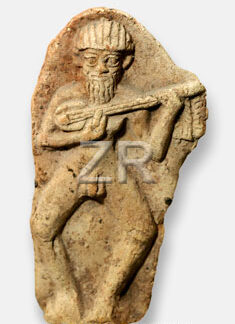
5334-3 Harp player,-Sumer
For layout purposes only:5334. Harp player, clay figurine from Eshnnuna, Mesopotamia, c. 9-7th. C. BC
Add to Selected -

5335 Dancing musicians,-Lar
For layout purposes only:5335. Women dancing and playing musical instruments. Clay plaque from Larsa , ancient city of S Babylonia, It was the biblical Ellasar (Gen. 14.1).
Add to Selected -
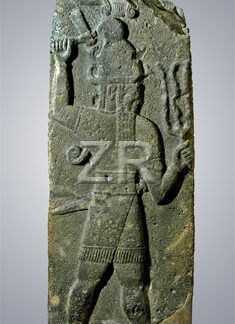
5336 Weather God,-Til Barsi
For layout purposes only:5336. Hittite weather God Til-Barsib standing under the symbols of a winged sun disc and crescent. In his left hand he holds a triple pronged lightning. Basalt stela from Tel Barsib, Northern Syria, dating c. 12-11th, C. BC
Add to Selected -
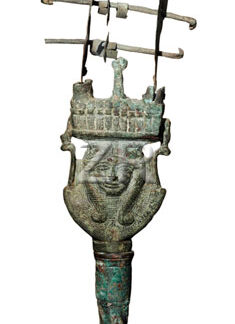
5337 Musical instrument,-Eg
For layout purposes only:5337. Cymbal like musical instrument, Egypt, c, 12-10th. C. BC
Add to Selected -
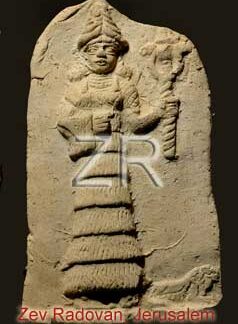
5339 Goddess Ishtar
For layout purposes only:deity godess figurine ishtar ashera ashtoreth
Add to Selected -
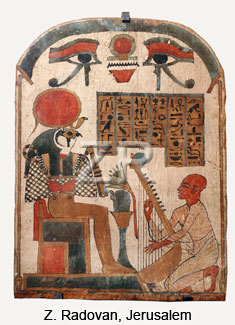
5343 Worshiping Horus
For layout purposes only:5343. Harp player worshiping the god Horus, the ancient Egyptian god of the sun, son of Osiris and Isis, represented as having the head of a hawk. Egypt c. 1069-664 BC
Add to Selected -
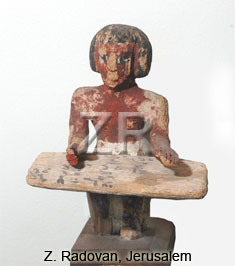
5344 Egyptian scribe
For layout purposes only:5344. Wooden figurine of a scribe at work. Egypt c. 2033-1700 BC
Add to Selected -
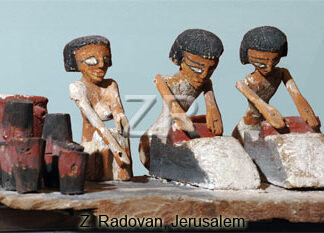
5345 Grinding
For layout purposes only:5345. Wooden model of women grinding wheat and making bread. Egypt, Middle Empire, c 2033-1710 BC
Add to Selected -
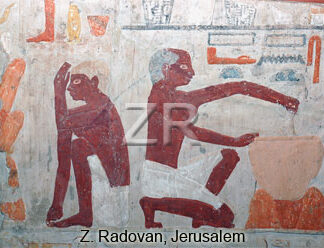
5347 Cooking,-Egypt-2000 BC
For layout purposes only:5347. Wall painting of a man cooking. Egypt, 5th. dynasty, c. 2350-2000 BC
Add to Selected -
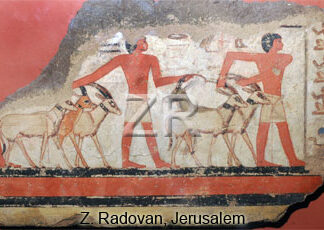
5348 Shepherds with gazelle
For layout purposes only:5348. Shepherds with gazelle and orix. Wall painting from Saqara, Egypt, c. 2300-2000 BC
Add to Selected -
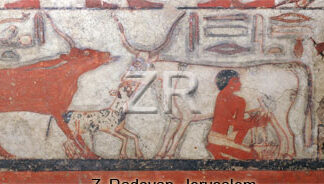
5349-1 Milking cows
For layout purposes only:5349. Man milking a cow. Wall painting from Saqara, Egypt, c. 2350 BC
Add to Selected -
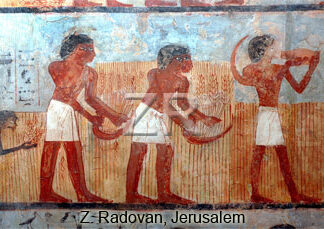
5351-1 Harvesting wheat
For layout purposes only:5351.Egyptian farmers harvesting wheat. Wall painting from Thebes (Egypt) c. 1450 BC
Add to Selected -
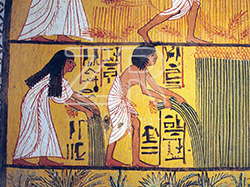
5351-4-Harvesting wheat
For layout purposes only:5351.Egyptian farmers harvesting wheat. Wall painting from the tomb of Senndjem, Thebes (Egypt) c. 1450 BC
Add to Selected -
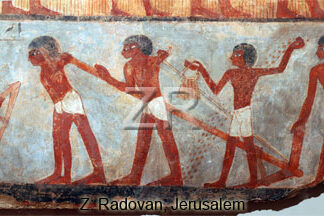
5352 Plowing and sowing
For layout purposes only:5352. Fresco depicting egyptian farmers plowing and sowing. Thebes (Egypt) c. 1450 BC
Add to Selected -
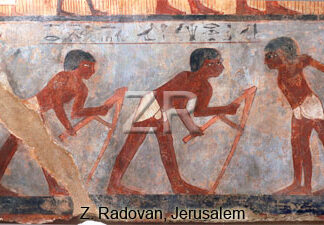
5353 Working the fields
For layout purposes only:5353. Egyptian farmers working the fields with a hoe. Wall painting from Thebes (Egypt) c. 1450 BC
Add to Selected -

5354-2-Goddes Lama, Mesopotamia
For layout purposes only:5354. Mesopotamian Goddess Lama, the Goddess of personal protection, c. 13th. C. BC.
Add to Selected -
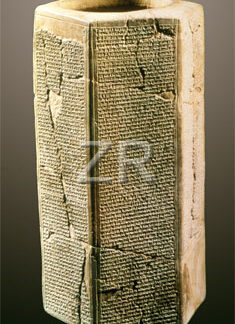
5357 Annals of Sannacherib
For layout purposes only:5357. The prism (known as The Taylor’s Prism) contains important historical information on the Neo Assyrian empire, c. 9 to 7th. C. BC. The inscription contains the anals of king Sannacherib 704-681 BC. Inscriptions like this were ussualy made to celebrate the completion of an important building project, in this case the king’s palace in […]
Add to Selected -
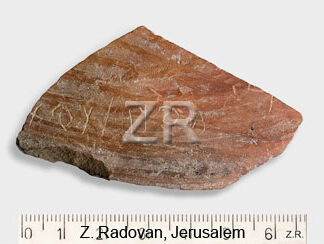
5361 The Goliath inscriptio
For layout purposes only:5361. The Goliath inscription found in Tell Gath (Tell Es Safi). Gath is known as the home town of the Biblical giant Goliath. The inscription scratched on a small sherd, written in Prtoto-Cnaanite letters is the earliest Philistine inscription ever found. It contains two non-Semitic names: Alwt and Wlt which, according to some researchers are […]
Add to Selected -
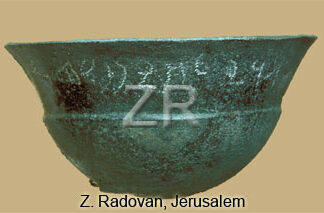
5362 Inscribed offering bo
For layout purposes only:5362. Bronze bowl dating c. 6-5th C. BC bearing an Aramaic inscription. It is a kind of offering vessels used in the Persian period in the plain of Sharon in the sanctuary of a group of Gods called Ashtars.
Add to Selected -
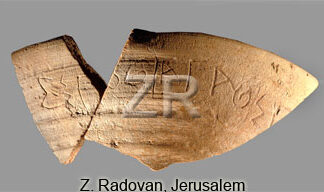
5363 Proto Cnaanite inscri
For layout purposes only:5363. Proto Cnaanite inscription on a bowl found in Qubur el Walaydah, north/western Negev. The inscription is dated to 1200 BC and the preserved letters mention names of people and the word ‘sheep’
Add to Selected -

5364 Hebrew ostracon from
For layout purposes only:5364. Ostraca found in Qumran dating from 1st. C. BC. The writing is in square Hebrew and it contains all the letters of the Hebrew Alphabet in ascending order. This appears to be a pupils excercise tablet.
Add to Selected -
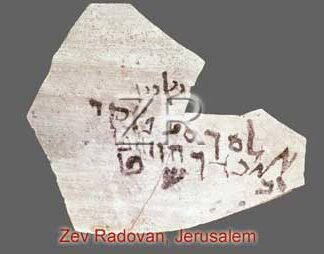
5364 Hebrew ostracon from Qumran
For layout purposes only:ostracon ostraca inscription qumran
Add to Selected -
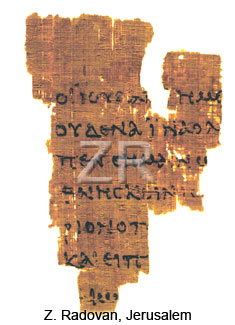
5365 Ryland Codex of John
For layout purposes only:“5365. The Ryland Papyrus P52, the earliest surviving piece of New Testament Scripture. A fragment of a papyrus codex containing John 18:31-33 and 37-38, This papyrus was found in Egypt, and has been dated at about 125 A.D. It currently resides at the John Rylands Library in Manchester, England”
Add to Selected -
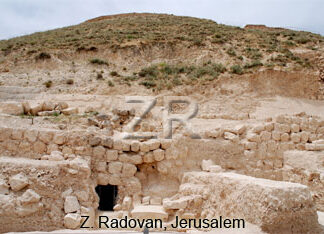
5371-4 King Herods Tomb
For layout purposes only:herod hordus tomb burial burrial herodium
Add to Selected -
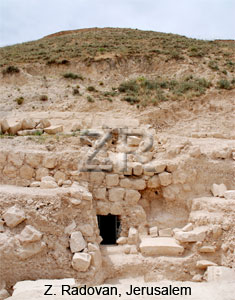
5371-8 King Herods Tomb
For layout purposes only:herod hordus herodium tomb burial burrial
Add to Selected -
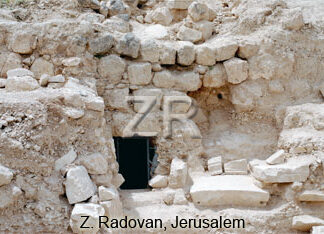
5371-9 King Herods Tomb
For layout purposes only:herod hordus herodium burrial tomb burial
Add to Selected -
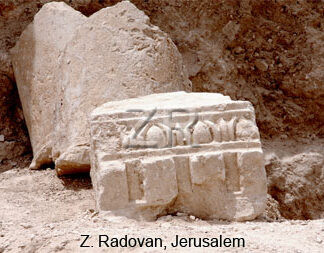
5372-1 King Herods Tomb
For layout purposes only:herod hordus tomb burial burrial herodium
Add to Selected -
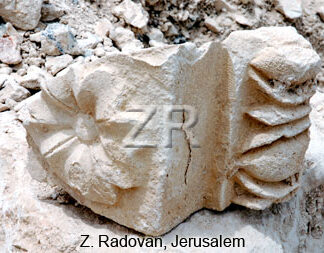
5372-3 King Herods Tomb
For layout purposes only:herod hordus herodium tomb burrial burial
Add to Selected -
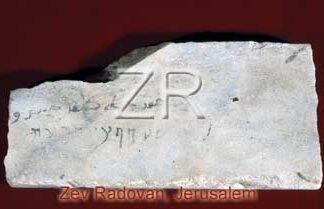
5375 Ostraca from Hisham
For layout purposes only:inscription jericho mefjar mafjar hisham
Add to Selected -

5376.-Arad ostracon
For layout purposes only:ostracon arad edom edomites hebrew ostraca
Add to Selected -

5378 Yannaus prayer,-Qumran
For layout purposes only:yanai qumran inscription hebrew alexander parchment
Add to Selected -
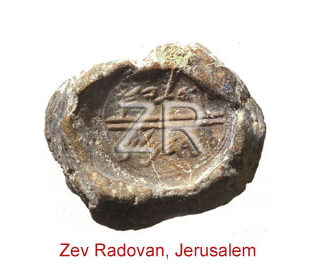
5379 Gedalyahu servant of the King
For layout purposes only:“bulla bulae bula bulla inscription gedaliahu gedalyahu servant”
Add to Selected -
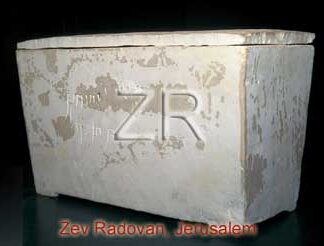
5381 Jehohanan ossuary
For layout purposes only:ossuary burial burrial tomb nail heelbone mivtar
Add to Selected -
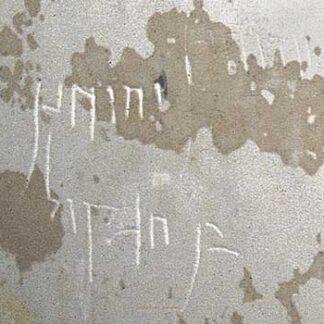
5381-1 Jehohanan ossuary
For layout purposes only:yohanan ossuary burrial burial tomb inscription
Add to Selected -
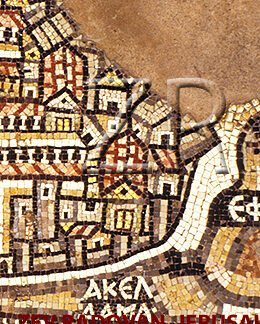
5382 Madaba map, Nea
For layout purposes only:5382. DETAIL OF THE MOSAIC FLOOR OF THE 5TH. C. AD CHURCH AT MADABA (TRANS JORDAN), SHOWING DETAILED MAP OF JERUSALEM AT THAT TIME. DETAIL SHOWS THE CHURCH OF NEA ONE OF THE LARGEST CHURCHES IN 4TH. C. JERUSALEM, BUILT BY EMPEROR JUSTINIAN
Add to Selected -
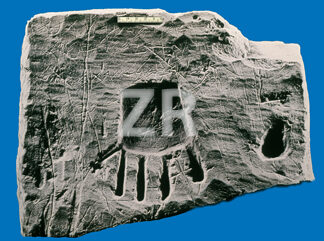
5383-1 Khirbet El Qom inscription
For layout purposes only:“5383. Inscription found on a pillar in a burial cave near Lachis, the hill country of Judea. The inscription written in ancient Hebrew is dated to c. 8th C.BC, The shape of a hand is sunken carved in the middle of the soft stone. The text reads as follows: 1. Uriyahu was the one who […]
Add to Selected -
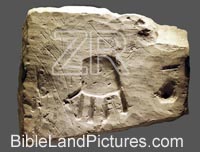
5383-3 Khirbet El Qom inscription
For layout purposes only:inscription, hand, tomb
Add to Selected -
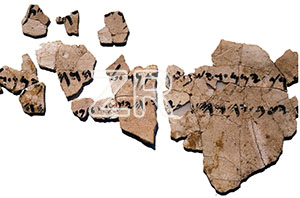
5384-1- Kuntillet Ajrud Blessing inscription
For layout purposes only:5384. Kuntillet Ajrud Blessing inscription. The inscription is in Hebrew language but in phoenician script, black ink on plaster, dating 9-8th C. BC. It reads:
Add to Selected
1. …may he prolong days and be satisfied and …
2. (and) Yahweh of Teman will cause things to go well (for him…) -

5384-1- Kuntillet Ajrud Blessing inscription
For layout purposes only:5384. Kuntillet Ajrud Blessing inscription. The inscription is in Hebrew language but in phoenician script, black ink on plaster, dating 9-8th C. BC. It reads:
Add to Selected
1. …may he prolong days and be satisfied and …
2. (and) Yahweh of Teman will cause things to go well (for him…) -
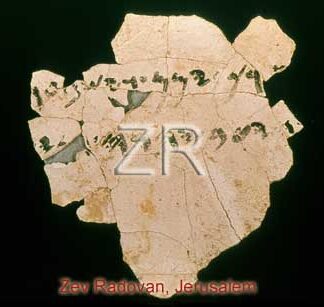
5384.-Kuntillet Ajrud Blessing inscription
For layout purposes only:blessing ajrud kuntilet inscription
Add to Selected -
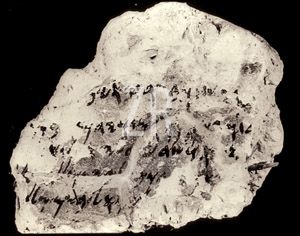
5385-1 Kuntillet Ajrud inscription
For layout purposes only:5385. Kuntillet Ajrud inscription, Hebrew language text written in phoenician script, black ink on plaster. Kuntillet Ajrud located in northeastern Sinai could have been an Iron age caravansery, c. 9-8th. C. BC
Add to Selected -
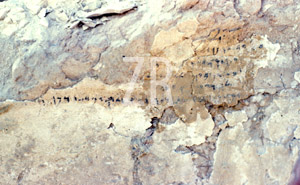
5385-2 Kuntillet Ajrud inscription
For layout purposes only:5385. Kuntillet Ajrud inscription, Hebrew language text written in phoenician script, black ink on plaster. Kuntillet Ajrud located in northeastern Sinai could have been an Iron age caravansery, c. 9-8th. C. BC
Add to Selected -
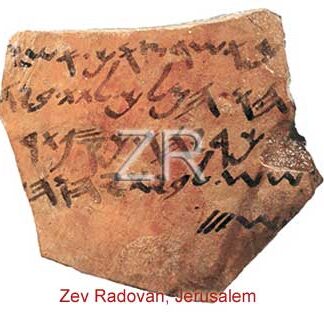
5386.-Three Shekel Ostracon
For layout purposes only:ostracon ostraca inscription hebrew payment
Add to Selected -
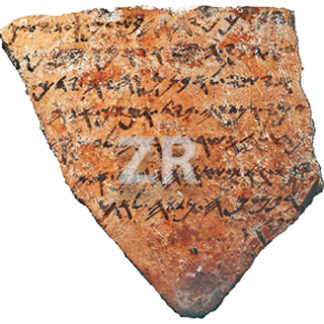
5387. Widows Plea Ostracon
For layout purposes only:“inscription ostraca ostracon widow”
Add to Selected -
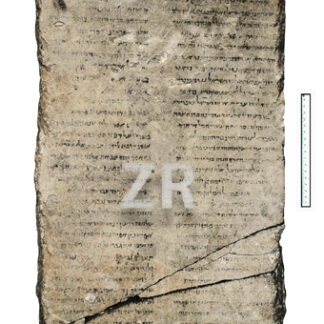
5395 The Gabriel inscription
For layout purposes only:hebrew inscription gabriel dead sea
Add to Selected -

5396 Codex Sinaticus
For layout purposes only:396. Codex Sinaiticus is a 4th century manuscript of the Greek Bible, written between 330–350. Originally it contained the whole of both Testaments, today only portions of the Greek Old Testament or Septuagint survive, along with a complete New Testament. It was discovered in 1844 by Constantine Tischendorf in St. Catherine’s Monastery in Sinai where […]
Add to Selected -
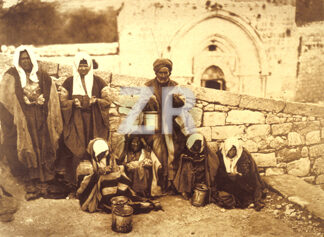
5399 Lepers in Jerusalem
For layout purposes only:5399. Group of lepers begging ner the Mary’s Tomb in Jerusalem. Photograph from arround 1910
Add to Selected
Showing 2901–3000 of 4374 results